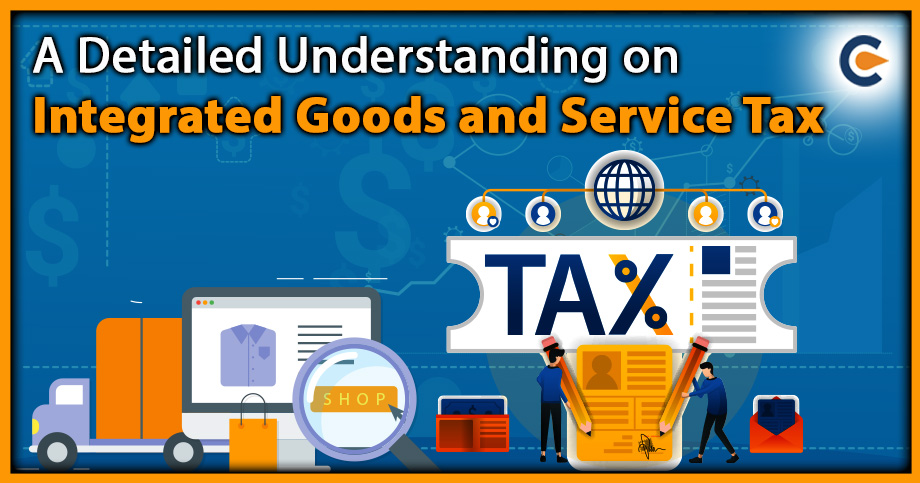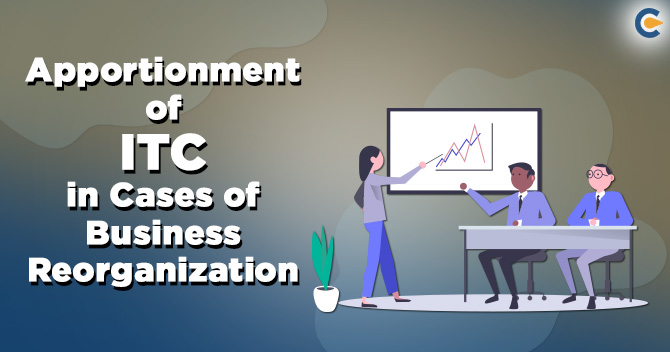GST stands for Goods and Services Tax, which is a value-added tax levied on the supply of goods and services in India. It is a comprehensive indirect tax that was introduced in India on 1st July 2017 to replace various indirect taxes levied by the central and state governments. IGST stands for Integrated Goods and Services Tax, which is a tax that is levied on the supply of goods and/or services when the supply occurs between different states in India. In this blog, we will discuss, Components of Goods and Service Tax, Concept of IGST with examples, Primary Characteristics of IGST, States that gets the tax revenue in case of IGST, and How to claim refund in Integrated Goods and Service Tax.
What Are The Main Elements Of Goods And Service Tax?
The elements of GST are as follows:
- Central GST (CGST): It is a tax levied by the Central Government on the intra-state supply of goods and services. The revenue collected under CGST is used by the Central Government.
- State GST (SGST): It is a tax levied by the State Government on the intra-state supply of goods and services. The revenue collected under SGST is used by the State Government.
- Integrated GST (IGST): It is a tax levied by the Central Government on the inter-state supply of goods and services. The revenue collected under Integrated Goods and Service Tax is apportioned between the Central and State Governments.
- Union Territory GST (UTGST): It is a tax levied by the Union Territory Government on the intra-state supply of goods and services within the Union Territories of India.
In addition to these components, there are also some special provisions for the North-Eastern states and some other categories of taxpayers. The GST system is administered by the Goods and Services Tax Council, which is a constitutional body comprising the Central and State Finance Ministers.
Concept of Integrated Goods and Service Tax
IGST stands for Integrated Goods and Services Tax. It is a tax levied by the Indian government on the supply of goods and services from one state to another state within the country. The IGST is collected by the central government, and the revenue is shared between the central and state governments in a specific ratio.
Here Is An Example To Explain Integrated Goods And Service Tax:
Suppose a manufacturer located in Gujarat sells goods worth Rs. 1, 00,000/- to a buyer in Maharashtra. In this case, the manufacturer will charge IGST on the transaction, which is currently set at 18%. So, the IGST applicable in this case would be Rs. 18,000/- (18% of Rs. 1, 00,000/-).
Now, the manufacturer will deposit this Integrated Goods and Service Tax amount with the central government. The central government will then distribute this revenue between the two states, Gujarat and Maharashtra, in a specific ratio. The ratio for sharing the IGST revenue between the central and state governments is decided by the GST Council[1].
Here Are Some More Examples Of Integrated Goods And Service Tax To Understand Better:
- A manufacturer in Gujarat supplies goods to a retailer in Maharashtra. In this matter, IGST will be applied on the transaction.
- A service provider in Karnataka provides services to a customer in Tamil Nadu. In this matter, Integrated Goods and Service Tax will be applied on the transaction.
- An e-commerce platform based in Delhi sells goods to customers in Kerala. In this matter, IGST will be applied on the transaction.
- A construction company in Haryana provides services to a client in Uttar Pradesh. In this matter, IGST will be applied on the transaction.
- A software development company in Andhra Pradesh provides services to a client in Telangana. In this matter, Integrated Goods and Service Tax will be applied on the transaction.
Primary Attributes of Integrated Goods and Service Tax
The Following Are The Features Of Integrated Goods And Service Tax:
- Single Tax: Integrated Goods and Service Tax is a single tax that is levied on the supply of goods and services across different states in India.
- Destination-Based Tax: IGST is a destination-based tax. This means that the tax revenue goes to the state where the goods or services are consumed and not to the state where they are produced.
- Input Tax Credit: Businesses that pay IGST can claim input tax credit for the tax paid on inputs used for their business. This ensures that there is no cascading effect of taxes.
- Uniform Tax Rates: IGST has a uniform tax rate across all the states in India. This helps to simplify the tax system and makes it easier for businesses to comply with the tax laws.
- Collection and Distribution: IGST is collected by the central government and then distributed among the states based on the destination principle.
- Integrated Tax System: IGST is a part of the integrated tax system in India that includes Central GST (CGST) and State GST (SGST).
States That Gets the Tax Revenue In Case Of Integrated Goods and Service Tax
In India, Integrated Goods and Services Tax (IGST) is a tax levied on the inter-state supply of goods and services. The tax revenue collected under IGST is distributed among the central and state governments according to a pre-determined formula. The IGST revenue is first collected by the central government and then distributed to the respective states. The distribution of IGST revenue is based on the destination principle, which means that the tax revenue is attributed to the state where the goods or services are consumed. To determine the amount of revenue that each state will receive, the IGST collected is apportioned among the states based on the consumption of goods or services in each state. This apportionment is done based on the recommendations of the GST Council, which is a body consisting of representatives from the central and state governments.
In summary, the state where the goods or services are consumed will receive the tax revenue collected under IGST, and the distribution of revenue is determined based on the consumption of goods or services in each state.
Refunds Claim In Case Of IGST
To get a refund of Integrated Goods and Service Tax (IGST), you need to follow the below process:
- Verify Eligibility: You must first verify that you are eligible for an IGST refund. Some common cases where a refund can be claimed include exports, deemed exports, and supplies made to SEZ units or developers.
- File the Refund Claim: Once you have confirmed your eligibility, you can file a refund claim on the GST portal in Form RFD-01. You will need to provide details of the tax paid, the period for which the refund is claimed, and other relevant information.
- Submit Documents: You will need to submit supporting documents such as invoices, shipping bills, and bank statements along with your refund claim. These documents will help the authorities verify your claim and process it faster.
- Verification: After you submit your refund claim and supporting documents, the tax authorities will verify your claim. They may also ask for additional information if required. Once the verification is complete, the authorities will process your refund.
It’s important to note that the refund process for IGST can be complex and time-consuming. It’s advisable to seek the assistance of a tax professional to help you with the process.
Conclusion
So, in summary, IGST is a tax levied on inter-state transactions of goods and services in India. It is collected by the central government and distributed between the central and state governments in a specific ratio. Overall, Integrated Goods and Service Tax helps to streamline the tax system in India and makes it easier for businesses to comply with the tax laws.
Also Read:
Step By Step Guide To Change GST Registration Details











